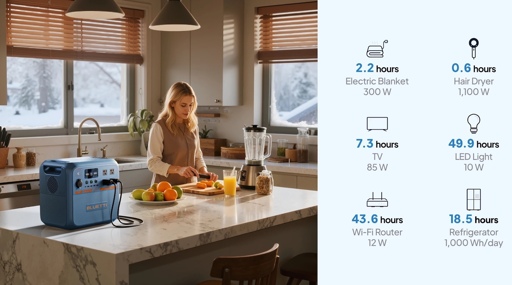- cross-posted to:
- technology@lemmy.world
- cross-posted to:
- technology@lemmy.world
" CATL has thrown its hat into the ring with the Naxtra sodium-ion battery, with 175 Wh/kg and 10,000 lifetime cycles along with operation from -40°C to 70°C. CATL is planning a start-stop battery for trucks using the technology. It has the potential to replace lead-acid batteries. CATL has announced battery pricing at the cell level in volume at $19/kWh. "



It’s not stupid. Being out five figures for a battery replacement is a real fear for a lot of people. Someone asked the dealership how much it would cost to get a battery replacement on an E-Tron and the answer was 70k USD once out of warranty. They cost 30k and less for the older ones and they’re still in warranty.
It’s unlikely to happen but if it does it makes your whole car a paperweight. This isn’t nearly as bad with ICEs where by the time catastrophic failure is even slightly likely, parts are so cheap you can get an engine for a few grand if not just a few hundred. Even a used battery for said E tron is 20 grand. My entire car cost me under 2k, less than some HYBRID batteries let alone BEV batteries.
This axe hanging above your head is what I’m hoping sodium batteries would solve. You don’t have to worry about “what if the battery starts deteriorating rapidly now that it’s out of warranty and I don’t have 30k to spend on it” if the battery costs 5k new and 1k used in good condition.
Batteries have outliers that don’t last long as well as those that last several times longer than projected. Same as ICEs. It’s just a very expensive lottery to win right now.
Technology Connections and Hank Green have been shouting this for a while, but that whole issue is way overblown. Some first gen EVs around 2010 had issues, but every major manufacturer since then has way exceeded expectations on battery lifetime thanks to advanced BMS and thermal controls. Car batteries don’t just rapidly degrade out of the blue, the tech has nothing in common with what’s in your phone. But public sentiment has not caught up because most people think Li-Ion = smartphone = dead after 2-5 years, so second hand EVs are way undervalued. Which is great for buyers.
It’s not like you can’t easily total a second-hand ICE by mechanical failure. Just ask anyone who own(ed) a puretech engine. If you went by manufacturer recommendations, the fucking thing might just eat your timing belt one day and grenade itself. And there’s no way a full engine swap on a 5-10 year old economy car is economically viable.
There’s always something that could go wrong when you buy a car. Unless you get comprehensive insurance and warranty, you need to accept the fact that losing the entire car to an accident, catastrophic mechanical failure, or theft is always a risk. If that’s too much anxiety to deal with, get a lease.
Tell that to the guy who had his Tesla blown up because of the battery replacement cost. Or anyone with an Audi E-Tron where after you go have it checked out for the battery recall, they limit you to max 80% charge on a car with already poor range, “just in case”.
Ah, but I wouldn’t buy a puretech engine. For one, too few cylinders. Secondly, I already know it’s a bad engine. The point of buying cars second hand is that others have already done ridiculous mileages on similar engines so you know if they’re good or not. If I want an economical engine from that time period, the Mercedes OM651 and OM654 are pretty durable and use very little fuel. I would of course prefer a 6 cylinder, but we’re talking about economy cars here.
I can get comprehensive insurance on a car up to 15 years old. I can fix or prevent catastrophic mechanical failure on an ICE. The infamous chains on an Audi 3.0 TDI are just chains… a replaceable item. Well actually it’s just the one tensioner that sometimes fails. Same with the infamous camshafts on the 2.5 TDI V6 dubbed “Hitler’s revenge”. The infamous seal that ruins early OM642s may take an entire day to replace at home, but it costs 10€. Most of these infamous early failure modes that people are afraid of are entirely possible to repair at home for a DIY guy. On a BEV I’m shit out of luck. When batteries become affordable, this is no longer the case and once those EVs drop down from 70-100k EUR new to 20k used, I’m buying the shit out of them.
In a BEV many of those failure modes don’t exist. It’s quite possible we’ll see them last much longer with essentially no issues
BEVs use conventional suspensions and brake systems, so failure there are likely just as repairable DIY
Replacing the batteries with new ones on my $50k when it was new car (BMW i3) would cost me about $10k. Which is roughly what the car is worth on the second-hand market right now. The chances of me ever having to replace said batteries are basically zero. The chance of an ICE car spontaneously setting itself on fire are actually much higher, so this is a massive nothing-burger. When owning a car you should ALWAYS think about what happens if said car is suddenly total-loss the next day. Usually the answer is to replace it with another second-hand, not buy a new (!) battery from the dealer. Hell, second-hand battery packs are a thing too now, and much cheaper. On most EV’s you just drop them from the bottom and pop in the replacement, much less work than replacing an ICE engine.
That’s not a particularly big battery, that’s why your battery is so cheap.
Even so, there’s nearly always someone willing to buy an ICE car off you to fix it, unless it’s a Stellantis product or something. Gets trickier with EVs because, again, cost.
Second hand battery packs are an option, but when I looked at ones for the car I was looking at, they still cost roughly the value of the car, unfortunately. On a car that entered production like 7 or 8 years ago.